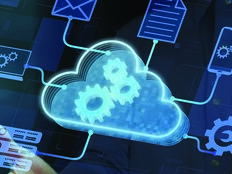Uncle Sam's Got a Strong Pulse
The value of data gathered from patients in Veterans Affairs doctors’ offices, at bedside in field military hospitals or in private clinics extends far beyond medical care.
Consider, for instance, the value of such information to the Socia lSecurity Administration.
SSA was one of the first agencies this fall to demonstrate use of a gateway and government-created software to exchange health records across the National Health Information Network. Why? Because it must validate Medicaid benefits, and to do that requires access to medical histories and records, notes Debbie Somers, senior adviser in the SSA’s Office of Deputy Commissioner for Systems. It’s typically a paper-intensive job that requires exhaustive records requests to doctors and then long periods waiting for files to arrive. But using NHIN and the CONNECT application, that turnaround time dropped to 1 minute during a test, she says.
Another user of medical data far removed from patient care: the Centers for Disease Control and Prevention. With its focus on public health, the ability to access data from doctors nationwide near the time of care would help CDC create situational awareness for incidents such as the current swine flu outbreak. “This gets us so far down the road,” says Barry Rhodes, acting chief of the IT Project Development and Operations Branch at CDC’s National Center for Public Health Informatics.
To read more about the collaboration of agencies to share health data, click here for our interview with Vish Sankaran, Federal Health Architecture program director at the Health and Human Services Department.
The Wellspring
Ultimately, any e-health effort starts with detailed medical information gathered at the point of care. In this vein, the government has forged ahead on point-of-care medical technology. Through the Army’s Medical Communications for Combat Casualty Care, the Defense Department arms its medics with portable computers that let them access health records and create a continuous stream of patient information — from the battlefield through transition to care by the VA.
In “Cyber Medics,”, find out the lessons learned by the Army through MC4 and how those lessons might apply to your program (even if it has nothing to do with patient care).
These federal efforts, like health records themselves, have portability. The initiatives have applicability across government and beyond, to industry, for broader electronic-health programs.
In this health-focused issue of FedTech, we also offer a look at how medical imaging technology is evolving to encompass more than radiology. And we include a review of an affordable monitor that allows dual-screen viewing of patient images and files without usurping valuable desktop or medical-cart real estate. Plus, find out why single sign-on is a must-have application for healthcare workers.
You also can peruse technical advice on: deploying Windows Server Core, preparing for 802.11n networks, taking advantage of high-availability storage and making use of disk-to-disk-to-tape backups in small agencies.
So here’s to the continued health of your technology projects — whether they serve an e-health mission or not.
Vanessa Jo Roberts
MANAGING EDITOR








